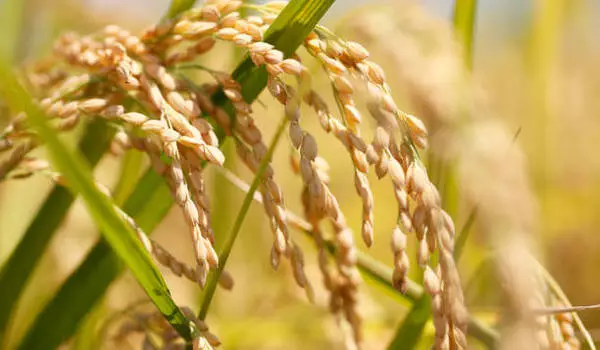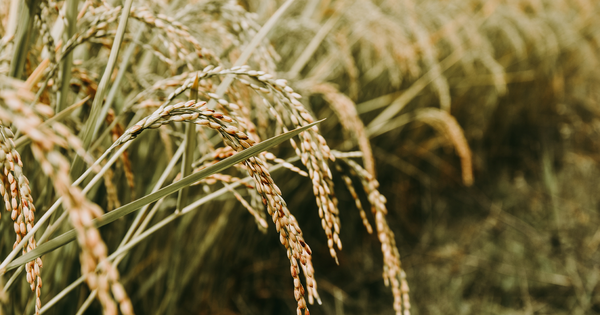Researchers have found evidence of ancient stone tools used for rice harvesting dating back to around 9,000 years ago in the Yangtze River Valley in China. This suggests that rice cultivation began in China around this time, which is earlier than previously believed. The tools were used to thresh and winnow rice, which are important steps in the process of rice cultivation. The discovery provides important insights into the development of agriculture in ancient China.
A new Dartmouth-led study of stone tools from southern China finds the earliest evidence of rice harvesting, dating back 10,000 years. The researchers discovered two methods of harvesting rice, which aided in the domestication of rice. The findings have been published in the journal PLOS ONE.
Wild rice differs from domesticated rice in that when it matures, it naturally sheds ripe seeds, shattering them to the ground, whereas cultivated rice seeds remain on the plants. Some sort of tool would have been required to harvest rice. Early rice cultivators selected the seeds that remained on the plants when harvesting rice with tools, so the proportion of seeds that remained gradually increased, resulting in domestication.
“For quite a long time, one of the puzzles has been that harvesting tools have not been found in southern China from the early Neolithic period or New Stone Age (10,000 – 7,000 Before Present) – the time period when we know rice began to be domesticated,” says lead author Jiajing Wang, an assistant professor of anthropology at Dartmouth. “However, when archaeologists were working at several early Neolithic sites in the Lower Yangtze River Valley, they found a lot of small pieces of stone, which had sharp edges that could have been used for harvesting plants.”
A rice plant contains numerous panicles that mature at different times, so the finger-knife harvesting technique is especially useful when rice domestication was in the early stage.
Jiajing Wang
“Our hypothesis was that maybe some of those small stone pieces were rice harvesting tools, which is what our results show.”
In the Lower Yangtze River Valley, the two earliest Neolithic culture groups were the Shangshan and Kuahuqiao. The researchers examined 52 flaked stone tools from the Shangshan and Hehuashan sites, the latter of which was occupied by Shangshan and Kuahuqiao cultures.
The stone flakes appear rough and are not finely made, but they have sharp edges. The flaked tools are typically small enough to be held in one hand and measure about 1.7 inches in width and length.
The team examined use-wear and phytolith residues to see if the stone flakes were used to harvest rice. Micro-scratches on the tool surfaces were examined under a microscope to determine how the stones were used for the use-wear analysis. The findings revealed that 30 flakes have use-wear patterns similar to those produced by harvesting siliceous (silica-rich) plants, most likely rice.

The tools used for cutting plants were distinguished by fine striations, high polish, and rounded edges from those used for processing hard materials, cutting animal tissues, and scraping wood. The phytolith residue analysis examined the microscopic residue left on the stone flakes known as “phytoliths,” or the silica skeleton of plants. They discovered that 28 of the tools contained rice phytoliths.
“What’s interesting about rice phytoliths is that rice husk and leaves produce different types of phytolith, which allowed us to determine how the rice was harvested,” Wang says. The results of the use-wear and phytolith analyses revealed that two types of rice harvesting methods were used: “finger-knife” and “sickle” techniques. Both methods are still used in Asia.
The stone flakes from the early phase (10,000 – 8,200 BP) showed that rice was largely harvested using the finger-knife method in which the panicles at the top of the rice plant are reaped. The results showed that the tools used for finger-knife harvesting had striations that were mainly perpendicular or diagonal to the edge of the stone flake, which suggests a cutting or scraping motion, and contained phytoliths from seeds or rice husk phytoliths, indicating that the rice was harvested from the top of the plant.
“A rice plant contains numerous panicles that mature at different times, so the finger-knife harvesting technique is especially useful when rice domestication was in the early stage,” says Wang.
The stone flakes from the later phase (8,000 — 7,000 BP) had more evidence of sickle harvesting, which involved harvesting the lower part of the plant. These tools had striations that were mostly parallel to the tool’s edge, indicating that a slicing motion was most likely used.
“Sickle harvesting became more popular as rice became more domesticated and more ripe seeds remained on the plant,” Wang explains. “Because you’re harvesting the entire plant at once, the rice leaves and stems could be used for fuel, building materials, and other purposes, making this a much more efficient harvesting method.”
Wang claims, “Both methods of harvesting would have reduced seed shattering. That is why we believe human unconscious selection drove rice domestication.”





